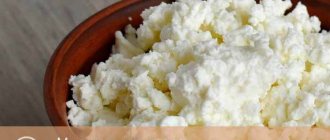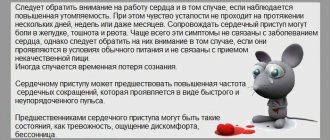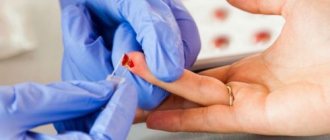What to do if your child has a fever? This question sooner or later arises in every parent who is concerned about the health of their child. But not all mothers and fathers know what temperature can and should be lowered. So, for example, in newborns and babies up to one year old the indicator is up to 37.5-38 degrees, which for us adults is considered elevated, and is the norm. The baby is one month old – does he have a fever? Reduce it only if it rises above 38-38.5.
As for older toddlers, for them this “threshold” is 39-39.5. If the thermometer shows a lower temperature, you should not knock it down. Remember that a child’s fever is an excellent opportunity for the body to fight the infection on its own. Give your baby the opportunity to boost his immunity!
Composition and dosage forms
Paracetamol is a substance from the non-steroidal non-narcotic group of analgesics with a pronounced antipyretic effect. Available in several pharmaceutical forms:
- tablets for oral administration: contain 200 or 500 mg of the active ingredient, packaged in blisters or packaging without cells;
- capsules: hard shell 500 mg;
- syrup and suspension: sweetish-tasting liquid, contains 2.4% paracetamol (24 mg per 1 ml), packaged in glass bottles of 50 and 100 ml;
- 1.5 percent aqueous solution for infusion: colorless transparent liquid in ampoules of 5 ml;
- rectal suppositories: in a dosage of 50–500 mg, packaged in cell contour plates.
What to do if your baby gets chickenpox?
Has your child caught chickenpox? Of course, this acute viral disease can also cause high fever. How to proceed in this case?
The most important thing is to choose an antipyretic drug for your baby. Under no circumstances should you use Nurofen. To combat high fever during chickenpox, medications containing Paracetamol are suitable.
Mechanism of action
The anti-inflammatory effect of the drug is insignificant. Paracetamol mainly acts as an antipyretic and a mild analgesic. A derivative of phenacetin inhibits the production of compounds in the body that are responsible for sensitivity to pain - prostaglandins. At the same time, it affects the thermoregulation centers, reducing high body temperature.
The drug helps with pain syndromes of various origins:
- neuralgia;
- myalgia;
- joint pain;
- algomenorrhea;
- renal colic;
- toothache;
- febrile conditions accompanying acute respiratory viral infections and other infectious lesions.
Paracetamol is quickly absorbed into the blood, does not accumulate in the body, and does not irritate the mucous membranes of the gastrointestinal tract. Metabolized in the liver. It is completely eliminated 4–5 hours after administration. The drug has a symptomatic effect: it relieves acute signs of diseases for a certain time, without affecting their intensity and duration.
Grodno Regional Children's Clinical Hospital
Details Published August 31, 2021
What to do if the temperature does not go down?
Elevated body temperature is a normal and even desirable response of the body to illness. And it is not recommended to lower the temperature below 38.5 degrees (with some exceptions). But what to do if the temperature is high, but you can’t bring it down or it’s very difficult to bring it down? Let us remind you of some nuances that parents forget about.
Dehydration (lack of fluid). Without water, medications (any kind, including antipyretics) are poorly absorbed, are distributed more slowly throughout the body and, accordingly, do not act as quickly as they should. And don’t forget that a decrease in temperature is associated with heat loss through the skin - sweating, and if there is “nothing to sweat with,” then the temperature will be higher.
Conclusion: you must give your child water! The drink should be not too sweet, not too sour, without additives or preservatives, and a little warm (close to body temperature). You can give water - drinking or boiled, (but not carbonated!), fruit drinks, rosehip decoction or herbal teas (attention, children with allergies with caution), dried fruit compote (raisins, dried apricots), regular tea (can be with lemon or raspberries) ), mineral water without gases.
We drink often, maybe in small portions. There is no need to “pour” half a liter of tea or compote into the child at a time, it’s better to take a couple of sips, but every 10-15 minutes. If a child refuses to drink from a mug, you can try to drink from a sippy cup, a drinking bottle, a teaspoon, or a syringe without a needle.
The temperature is above 38.5 and continues to rise, if you can’t get your child something to drink, go to the hospital!
Dry air and heat in the room. As the famous doctor Komarovsky says: “in the room where a sick child lies, it should be cool and humid.” The air temperature should ideally be closer to 19-20 degrees and humidity 40-60%.
Inappropriate clothing. Clothes should be loose, not too hot, and made from natural materials. If the child sweats, it needs to be changed more often. It is impossible to wrap a feverish child in a blanket, as thermoregulation processes are disrupted.
Excessive demands. You should not try to reduce the temperature to 37, or even 36.6 degrees, if the child is 39. A decrease to 38.5 degrees is already enough. The main thing is that the child’s well-being improves.
Time. The temperature will not begin to decrease instantly and even after 2-5 minutes. The drug needs time to be absorbed and distributed throughout the body, which is at least an hour. Only after an hour can the effectiveness of the antipyretic be assessed.
Incorrect choice of form and/or dose of medication. There are two types of antipyretics - with paracetamol or ibuprofen. But the forms are different - candles, tablets, syrups, solutions.
Up to one year and in case of vomiting, it is optimal to use rectal suppositories. The syrup is suitable for children from 1 year to 4-5 years.
The dose of the medicine must be calculated based on the child’s weight according to the instructions for the drug, and in no case “by eye”.
Single dose of PARACETAMOL 15 mg/kg, interval between doses - 6 hours.
A single dose of IBUPROFEN is 10 mg/kg, the interval between doses is 8 hours. You can take the medicine no more than 3 times a day.
If the antipyretic drug does not work - the temperature does not drop by 1 degree within an hour, you can give a drug with another active ingredient.
Hygiene. Showering, rubbing with warm water, splashing in the bath are great ways to cope with the temperature. But it is categorically forbidden to wipe a child with vinegar or alcohol (even in diluted form) - the risk of poisoning is very high.
Pediatric neurologist of the office of FD Glybokaya O.L.
What temperature should be lowered in a child with influenza and ARVI?
High temperature forces the child's body to turn on its protective function. In this case, there may be a general deterioration in the form of malaise and headaches. The child becomes lethargic and whiny, which brings a lot of anxiety to parents. Before bringing down a child’s high temperature, you need to clarify significant nuances.
A slight increase in temperature does not lead to serious consequences and does not require any measures to be taken. Parents need to have reliable information about what temperature should be lowered. Improper actions can cause weakened immunity. There is a risk of developing possible complications and the disease may become protracted.
Cases when you need to bring down the temperature in children:
- 37.2-37.9°C (low-grade fever) – should be taken for newborns up to 2 months of age if indicated;
- 38.0-38.9°C (febrile) – antipyretics must be given in all cases;
- over 41.0°C (hyperthermic) - you need to call an ambulance if the drugs do not lower the readings on the thermometer.
It is necessary to call an ambulance if febrile spasms appear - this is intolerance to high temperature, an individual feature of the child’s body. This condition usually does not occur in children over 6 years of age (provided there are no pathologies in the central nervous system).
Chronic or acute diseases in cardiology, neurology or lung disease require lowering the temperature in children if the readings are above 38°C. Otherwise, complications from the heart, nervous system and respiratory organs cannot be ruled out.
If you have difficulty lowering your temperature, you should immediately seek medical help. If the thermometer has barely reached 37°C, and the child looks lethargic and his health is only getting worse, you should not expect a further increase in the readings on the thermometer.
Analgin
Translated from overseas, the word “ analgin ” means absence of pain. A beautiful word, proud. And there is something to be proud of - it is difficult to find a person analgin , and even more difficult - who has not heard of analgin.
Analgin is good for everyone - it is cheap, sold without any prescriptions, produced in sufficient quantities by the domestic medical industry and, what is most remarkable, it really helps many.
The obvious advantages noted above allowed analgin to firmly win the sympathy of the broad working masses and take its rightful place in home, camping and resort first-aid kits.
So what is this thing - analgin?
To begin with, let us note that victory over pain was, is and, apparently, will for a long time still be the cherished dream of humanity in general and human medicine in particular. Substances that can reduce pain have been known to people for many millennia - take, for example, the opium poppy.
But the whole paradox was that, trying to turn off the pain, healers, healers and other healers turned off the one who was in pain. An interesting example on the same topic: during excavations of Scythian mounds, skeletons of warriors were found with obvious signs of amputation (either arms or legs).
And all these skeletons had a distinct dent on their skull - a trace of a special Scythian anesthesia - hit on the head with a club, and then you can easily cut off your leg.
The essence of the information provided is that for a long (to put it mildly) time it was possible not to feel pain only under the influence of a very decent amount of either drugs, or alcohol, or something else more significant (for example, a blow to the head).
Analgin is the main drug in the group of so-called non-narcotic analgesics - that is, drugs that can reduce pain without affecting the psyche.
Nimesil
The active ingredient of the antipyretic drug is nimesulide. These are NSAIDs with pronounced anti-inflammatory, antipyretic and analgesic effects. You can buy Nimesil at the pharmacy in individual sachets. Among the contraindications to taking Nimesil are diseases of the gastrointestinal tract (the full list is listed in the instructions, so be sure to read it before taking the drug). "Nimesil" should be used only after consultation with a doctor.
Nimesil
Berlin-Chemie/Menarini, Germany
Treatment of acute pain (back pain, lower back pain; pain syndrome in the musculoskeletal system, including injuries, sprains and dislocations of joints, tendonitis, bursitis; toothache);
— symptomatic treatment of osteoarthritis with pain syndrome; - algodismenorrhea. The drug is intended for symptomatic therapy, reducing pain and inflammation at the time of use. from 24
5.0 2 reviews
2384
- Like
- Write a review
How to help a child’s body fight infection?
Regardless of whether you follow the recommendations on what temperature to lower in children, you must take care to create the necessary conditions for the patient. All family members should improve the quality of personal hygiene: wash their hands, wear disposable gauze bandages, etc. You also need to provide the child with separate cutlery and dishes.
Recommendations for a speedy recovery:
1. A sick child must remain in bed.
2. It is necessary to ventilate the room in which the baby is located (the influenza virus and other microorganisms are concentrated in musty air).
3. Care should be taken to humidify the air (at the same time, the mucous membranes of the nose and larynx do not dry out; this improves local immunity and promotes well-being).
4. You should ensure that you drink plenty of fluids (virus breakdown products are eliminated through the kidneys, which reduces the load on the body).
5. The baby’s clothes should be light, preferably made from natural fabrics.
6. It is considered normal for a baby to have no appetite. You should avoid spices, citrus fruits, and dairy products, which can cause irritation of the gastric mucosa. A hot bath at a high temperature is not the most pleasant feeling, but cool (not cold) water can help normalize the indicators.
7. It is recommended to use the bath together with antipyretics, and not instead of them. You can also get some relief by applying a cool compress to your forehead.
How to lower an adult's fever: 8 best drugs
September 14, 2022
68291
4.3
4
Content
- How to choose fever pills
- Why does the temperature rise
- What to do at elevated temperatures
- How to reduce fever without medication
- The best antipyretics
- Paracetamol
- Nimesil
- Nurofen Long
- Theraflu ExtraTab
- Ibuklin
- Maxicold
- Rinza
- Aspirin
An increase in temperature is a signal from the body that there is an inflammatory process somewhere. An increase in temperature is a protective response of the immune system, the purpose of which is to eliminate the problem. But there are situations when the temperature urgently needs to be brought down. We will tell you which antipyretic pills are best to choose.
How to properly lower the temperature at home?
Effective folk ways to reduce fever without medications in children:
- A drink made from cranberries is a unique diaphoretic that reduces fever. The berry is useful for containing vitamins and accelerates the elimination of decay products.
- Chamomile tea is an excellent anti-inflammatory remedy. To prepare the infusion, pour a tablespoon of chamomile into a glass of boiling water, let it brew for 2 hours, drink up to 5 times a day.
- Elderberry decoction effectively helps reduce fever. It is enough to take 50 g of elderberry and pour boiling water (200 ml) over it.
- Linden tea – gives excellent results when consumed with honey. The child will sweat profusely, which will reduce body temperature due to the evaporation of excess moisture from the skin.
You can wipe the child's body with a terry towel moistened with water at room temperature. Applying a heating pad with ice to large vessels helps. Wrapping in a damp towel or sheet is also recommended.
What to do if your child has a fever?
Does your baby have a fever? Then you can’t hesitate - you need to urgently consult a doctor. Especially if it is accompanied by:
- rash;
- neck muscle tension;
- abdominal pain;
- vomiting.
But don’t panic: fever is typical for most common viral respiratory infections and high temperatures - about 40 degrees. This is how our body responds to infection. The pediatrician will simply examine the child and select the right treatment for him, taking into account the severity of the disease.
Is it necessary to bring down a child’s temperature to 36.6?
If, after using antipyretics, the readings decrease by 0.5°C within an hour, then the process is normal. Do not aim to reach 36.6°C immediately. This can cause serious overload of the child’s body, which can lead to a deterioration in overall well-being.
The ideal temperature would be 37-37.5 degrees. After some time, a jump may occur again. This occurs because the active component of the medicine is excreted from the body and ceases its effect. If several hours have passed after taking the drug, you can give the child another dose. It is very important to observe time intervals between doses and monitor temperature readings.
With an effective fight of the immune system against pathogenic microbes and with a competent approach to treatment, recovery, as a rule, is 3-5 days.
Where to buy, how much it costs
You can buy the drug at almost any pharmacy; it is available without a prescription. At the same time, the price of analgin is affordable for every patient. The cost of a pack of blisters containing 20 tablets of the substance is about 1 ruble.
Analgin is a medicine that was actively used by our grandmothers during the USSR period, when a variety of drugs similar to today’s was not available on the pharmaceutical market. Traditionally, today it is one of the most accessible and inexpensive medicines with a wide range of applications in various pathologies. It is prescribed to adults and children when severe spasms occur. Or taken urgently in case of increased body temperature.
Theraflu ExtraTab
These fever tablets contain paracetamol, which reduces fever well. In addition, Theraflu ExtraTab contains phenylephrine (a vasoconstrictor) and chlorphenamine (an antihistamine). Therefore, the drug has a complex effect - it relieves swelling during a runny nose and reduces fever. Contraindications to taking Theraflu ExtraTab include stomach ulcers.
Theraflu extratab
Novartis Pharma Services AG (Novartis Pharma), Switzerland
Symptomatic treatment of infectious and inflammatory diseases (ARVI, including influenza), accompanied by high fever, chills, headache, runny nose, nasal congestion, sneezing, muscle pain.
from 148
444
- Like
- Write a review









